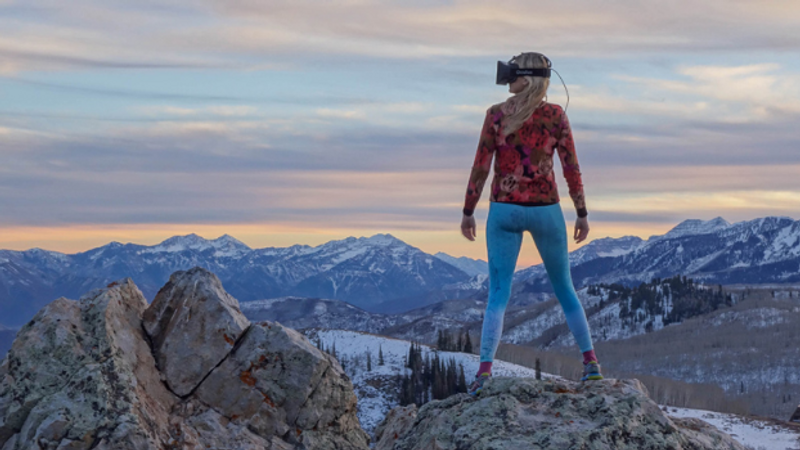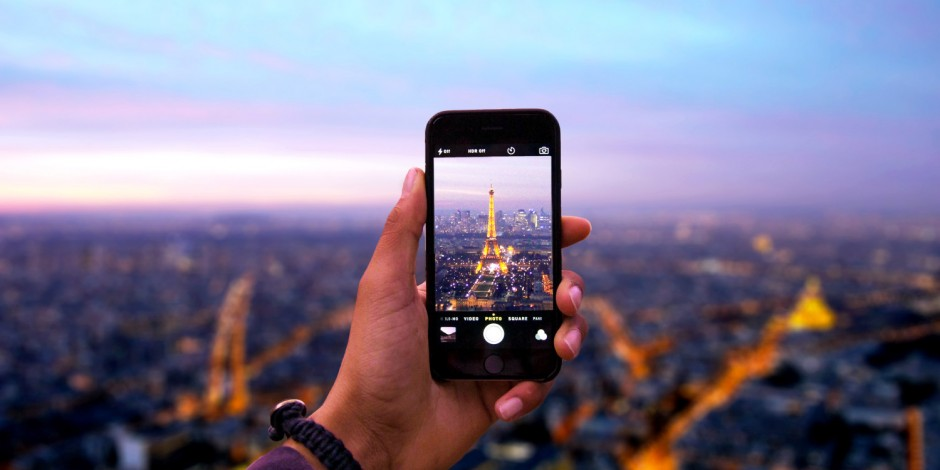Tourism and V-Commerce
Angela Hassassian
Feb 27, 2018 - 7 min read

Tech gurus everywhere will get into a debate of just how influential AR and VR will be in the years to come. As mentioned in my previous article on the use of AR in Museums, there will always be those who see the technology as a threat rather than an advantage. We have already seen a drastic increase in information consumption via mobile devices, but the trend on the horizon is VR and AR technology. Today I will be delving a bit deeper into how consumers are going to use this technology to shop for items and plan and book trips! I will be using both statistics showing our current situation and examples of its uses now. In a previous post, I’ve discussed how V-Commerce is a new trend to keep our eye open for, and it’s easy to see why.
Before we begin let’s take a look at some general statistics about our consumer habits. In today’s world, consumers are constantly exposed to content, be it ads, offers, tweets, push notifications, and just about everything under the sun. It’s gotten to the point where we’re becoming desensitized to all of these marketing tactics. Our brains are simply not capable of processing so much content and retaining it. According to a report from Informate Mobile Intelligence, Americans spend an average of 4.7 hours a day on their smartphones! That’s a lot of marketing potential, but it turns out, what really matters are micro-moments.
Micro-Moments and Marketing
The first buzz term you might want to focus on is micro-moment. Google defines a micro-moment as something which “occurs when people reflexively turn to a device—increasingly a smartphone—to act on a need to learn something, do something, discover something, watch something, or buy something. They are intent-rich moments when decisions are made and preferences shaped.” This concept is fairly straightforward, we are all guilty of it all the time. When we aren’t simply killing time and procrastinating, we genuinely use our smartphone devices to get that bit of urgent or puzzling piece of information.
These micro-moments affect every industry, but one of the most predominant examples is that of the travel and hospitality industry. It turns out that a.) people are increasingly using mobile devices when researching for planning a trip, and b.) that the planning journey starts at the inception of the idea. According to Google, “37% of travelers in the U.S. think about vacation planning once a month; 17% think about it at least once a week.” The process happens on mobile devices, frequently, over the course of months. Mobile web conversion rates for travel sites have grown 88%. On Google.com, mobile searches have increased more than 50% in just the travel category alone. Consumers are also making more purchases using their phone.
People are curious to know about where to go and what to do in different destinations. They want to know what other people have to say and discover new possibilities. And a whopping 38% of them are doing it from their mobile devices. It’s like opening Pandora's box of marketing. YouTube is also a very key player, with 64% of travelers watched travel-related videos when they were thinking about taking a trip.
VR and the Travel Industry
The mix gets even more spiced up when we project trends for the future, using technology like AR and VR. Soon enough we will become used to consuming VR and AR content. The same kind of information can be presented to us in these innovative and immersive formats. The VR in the Travel industry might boom under certain circumstances. First of all, VR headsets will have to hit the mass market and the technology must be adopted by a significant amount of consumers at home. Then if usability is fluid and intuitive, making the process of preparing for and booking their trips easy, we may end up seeing a revolutionary upgrade in the online travel agency (OTA) business.
This technology will then offer a new kind of boost to the traditional travel agency. Those most likely to benefit are traditional travel agencies that have already built some kind of relationship with travelers and other operators/suppliers. They can give consumers the chance to take virtual tours using VR headsets and then book virtually. The travel industry is gradually waking up to the benefits of virtual reality tours. Already we are seeing virtual reality online tours popping up across the internet, giving you a taste of cities, landmarks, museums and hotels in a try-before-you-buy format. Here are some practical examples of VR/AR use in the travel industry.
Airbnb Hosted Walks
While the majority of travel industry companies have been trying to help customers choose vacation spots, some are beginning to opt for a different approach, called “mixed reality.” The reality is, immersiveness is a key factor in gaining and retaining consumer attention. A prime example of “mixed reality” is Airbnb’s project, Hosted Walks.
Hosted Walks is an innovative concept brought to us by none other than Airbnb. The idea is fairly simple: They want people to be able to travel not as tourists but as locals. According to Google, “‘Hosted Walks’ tapped into Airbnb's passionate network of New York City hosts to help travelers do just that.” So how does it work? Well, when visitors search for tourist spots or places to eat in the Times Square area, they get a suggestion to see “New York like a local with a Hosted Walk.” Using Google Maps and Directions API, travelers can reach their destination, while discovering other interesting spots along the way. While walking, for example, an Airbnb host’s voice may share a piece of information about an area that only locals could really know about.
Amadeus
Companies like Google, Facebook, Microsoft, Samsung, HTC and Sony are trying to create the optimal headset for consumers to use as a primary tool for commerce. Amadeus is one of the companies taking V-commerce in the travel industry to a new level. They give consumers a taste of what they can experience during their trip using VR simulations.
How does it work? When you open the simulation you will see a large globe surrounded by planes and their tracked courses. You can begin exploring your options by selecting either a flight route or a destination. You are given vital information, such as the prices for tickets and the differences between seats in the aircraft. Booking is also fairly easy. Simply choose a credit card from your floating wallet and use it to complete your purchase. You can go so far as to book for more than one person, create avatars of each person, and decide where each person would like to sit on the plane using a 3D seat map. The simulation extends to rental car bookings as well. Travelers are able to place themselves in a 3D model of a Lamborghini, for example, giving them a chance to “test” the product before making a decision to buy.
There are many companies probing the industry and trying to find the optimal way to cater to consumers' needs. Companies like 360Stories, who are trying to find the balance between technology, tourism and storyliving. We live in exciting times where all of these things meet at a unique crossroad, offering something multifaceted, immersive and engaging. Marketing and commerce is a major aspect which also cannot be ignored, as everything is eventually monetized. The question is, will your company be able to keep up and tap into the opportunity while it’s still fresh?


